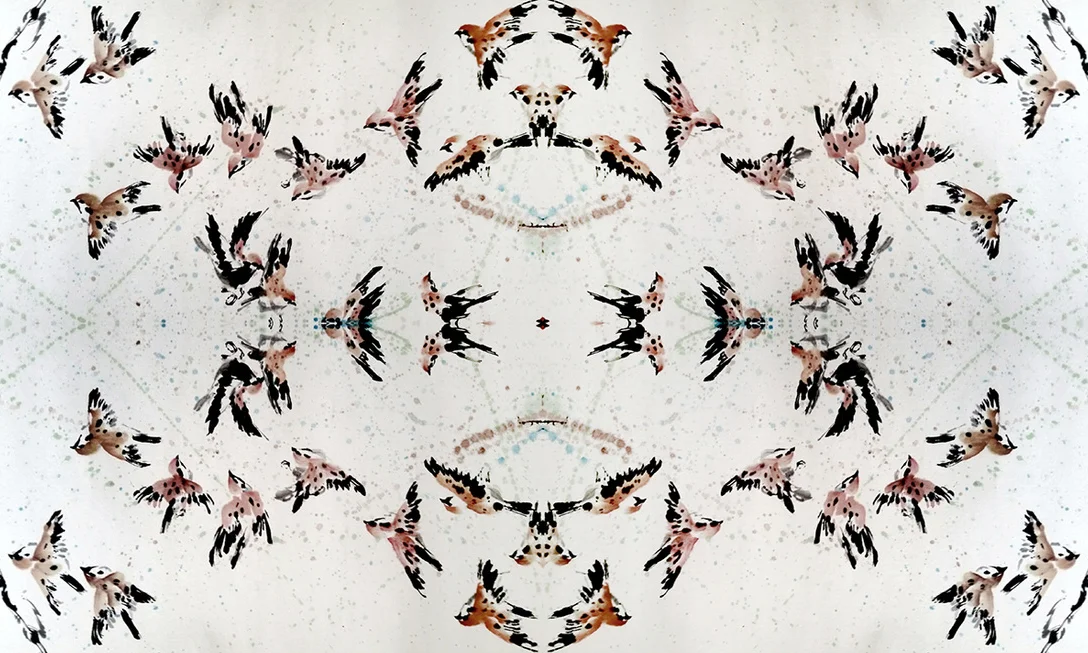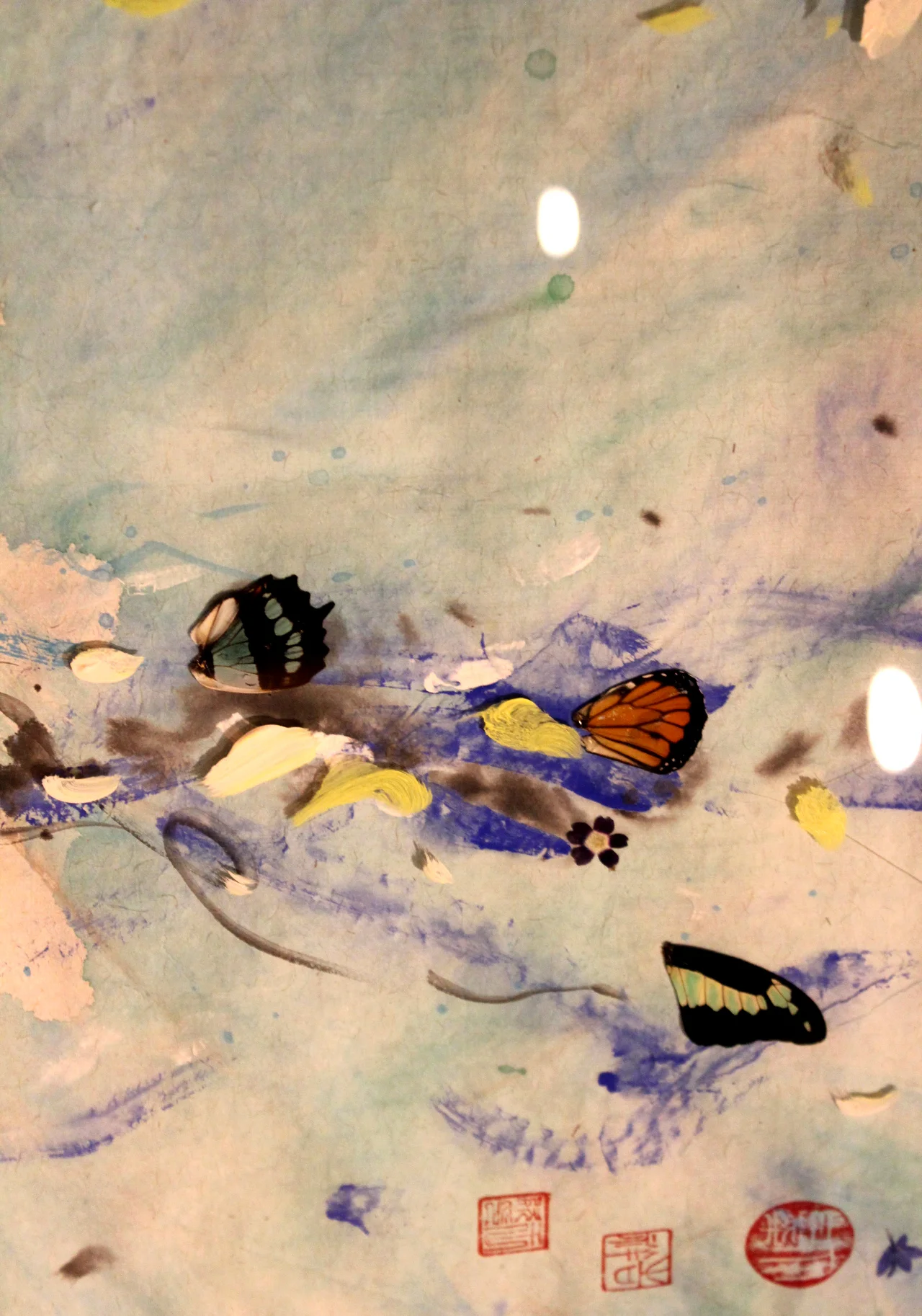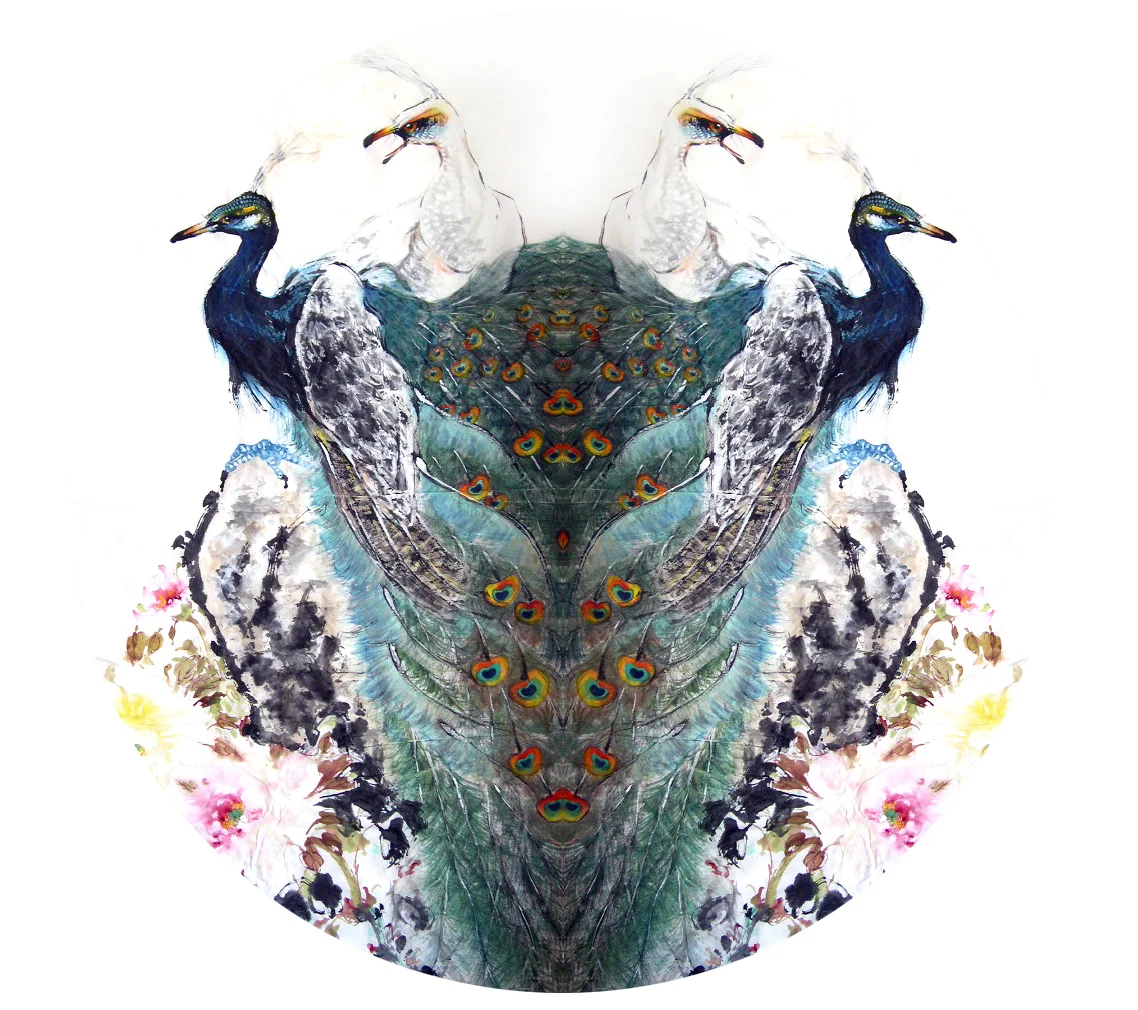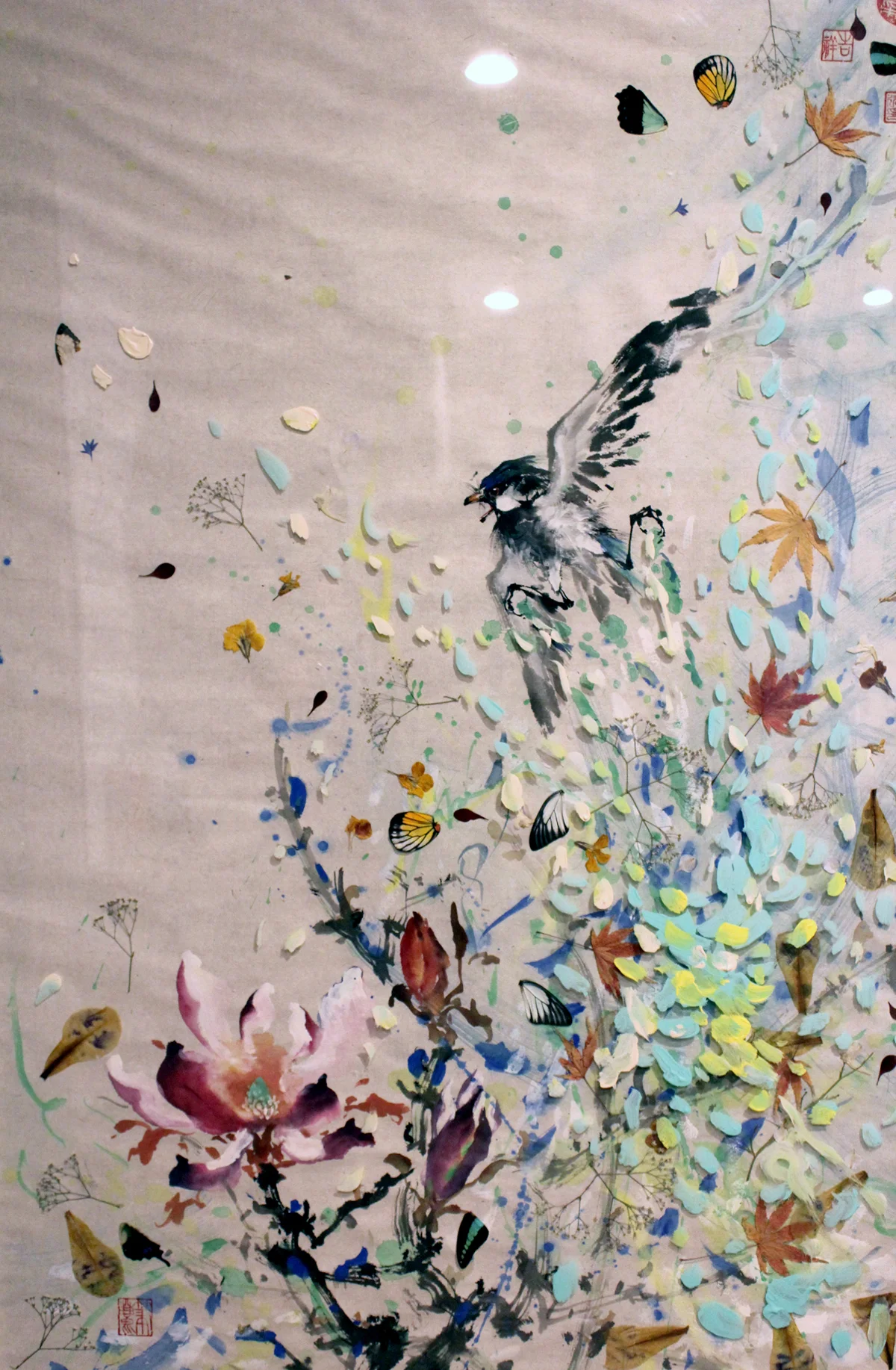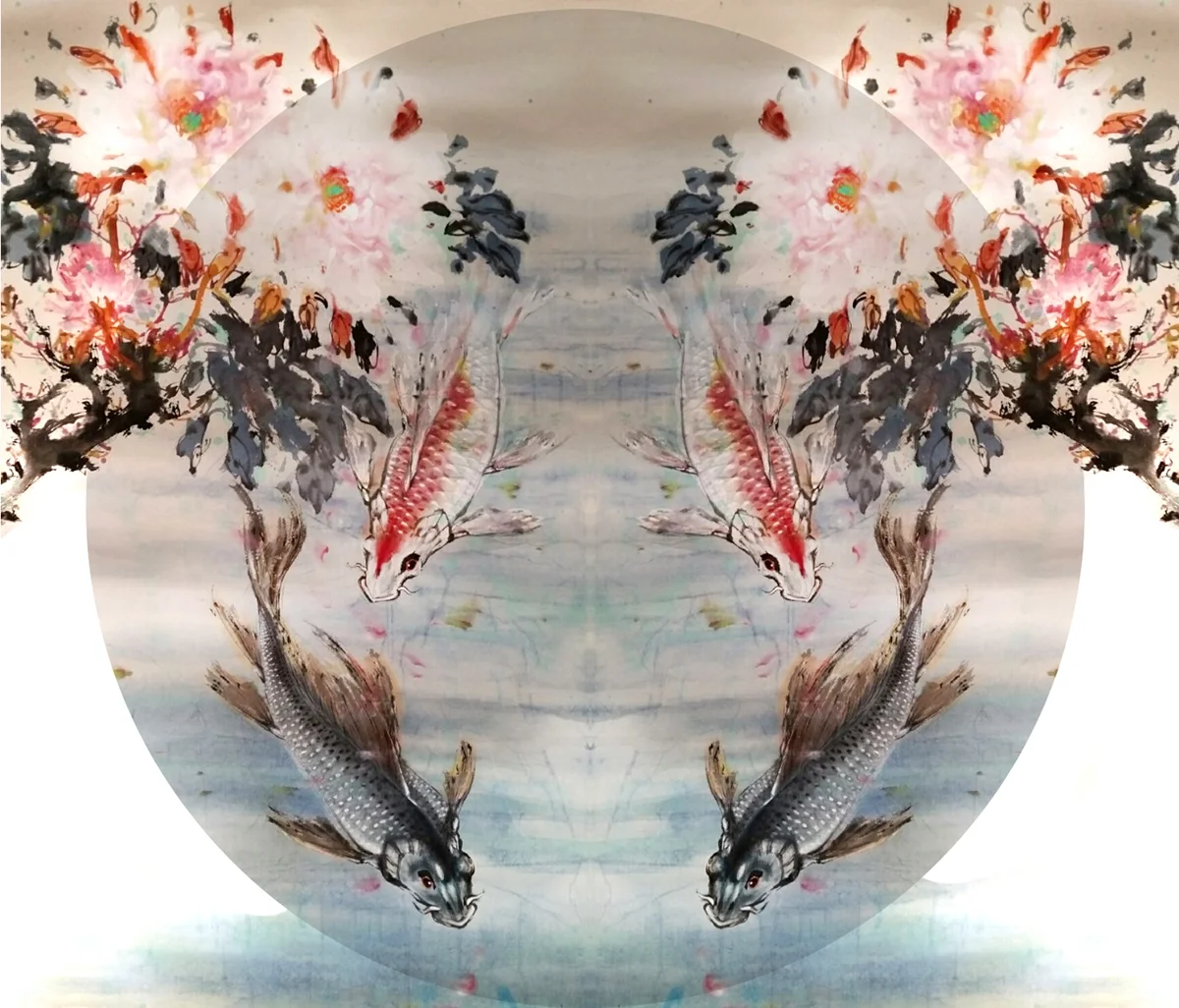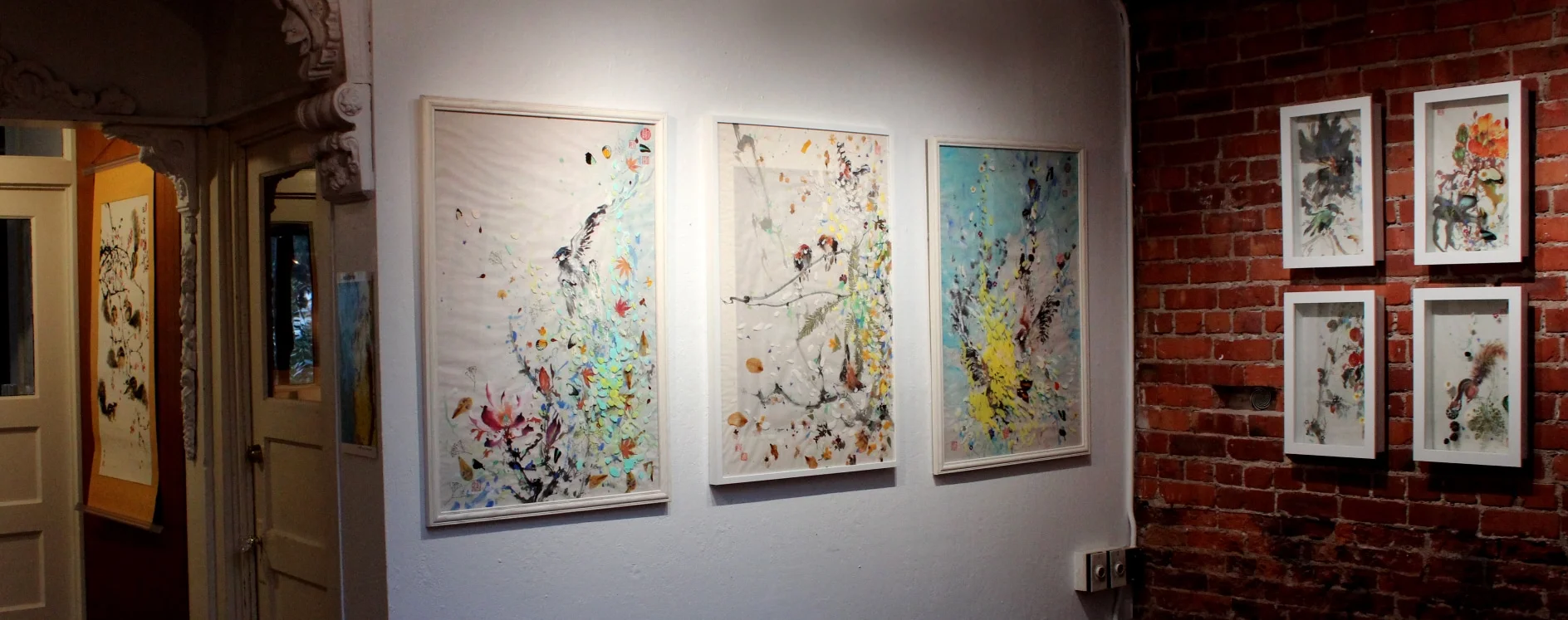Preservation
selected works by Anita Wong
Asymmetric Magazine: Tell us about your current work.
Anita Wong: My current works have been dealing with preservation of nature and Guo hua, individualism in the viewer’s eyes, patterns in nature, and the role of traditional art in the digital age inspired by The work of art in the age of mechanical reproduction, an essay by German cultural critic Walter Benjamin. My painting series Rorschach, for example, offers the viewer a Rorschach test, which invites them to question openly on what the individual sees. This invitation lets the viewer see art with not just the eyes but also the mind. It allows an old ancient art form to question the modern minds. As Claude Monet says, 'Everyone discusses my art and pretends to understand, as if it were necessary to understand, when it is simply necessary to love.' Individualism to the viewers' eyes is something I think of as great importance. I’d like to leave it to the viewer to figure out the meanings of each painting–what it means to one viewer might mean something completely different to the others. I’d like to use the traditional art form to open and question the modern minds. Visual communication is different than verbal communication; there are abstract meanings and certain beauty in it that words can never achieve. My current painting series Preserve, which uses pins to preserve real insects and objects found in nature, reflects my ultimate goal: Preserving the beauty from nature and the old art form of Guo hua. What I learned in design, photography and digital arts plays a key role in my art creation. My ultimate dream as an artist is to develop unique styles of Lingnan Guo hua and modern traditional arts that speaks to both eastern and western viewers.
AM: What is your biggest inspiration?
AW: My biggest inspiration is nature. As Claude Monet says, 'The richness I achieve comes from nature, the source of my inspiration.' and 'I perhaps owe having become a painter to flowers.' My biggest inspiration in life is my mom, an animal lover, a Chinese language and history teacher, and biologist. My teacher 辛鵬九, whom is a world-renowned Lingnan style master. I am currently inspired by impressionist painters. The new Lingnan Guo Hua style I am developing is inspired by impressionism for its characteristics in expressive defined brush strokes, shimmering effects of light, movement and passage of time. I’m fascinated by not just the style, but the movement that brought painters outdoors to experience nature [free] from the limitation of indoor studio sets. I'm very interested in how impressionists share a similar brush works as Guo hua–fast and expressive in their brush strokes that captures the moment. Unlike realist painters, impressionist painters and Guo hua painters are using the medium as an expression of their feelings and view points toward the subject matter, rather than an imitation of the realities. I like to create art for arts sake. I don’t want to limit myself with what sells or what is trendy. Creating art and being an artist is a luxury to me. I wake up every morning and feel lucky to be alive because I am an artist. As great Salvador Dali said, 'Every morning when I wake up, I experience an exquisite joy–the joy of being Salvador Dalí–and I ask myself in rapture: What wonderful things is this Salvador Dalí going to accomplish today?'.
AM: What role does Los Angeles play in your work?
AW: I consider myself an international artist. I've lived in cities like Beijing, Hong Kong, London and NYC, but the city of Los Angeles has a special place in my heart. Art is in the air here. Art is not limited in the city museums and galleries; it's more than that in LA. Art is alive in the lifestyle here. It's in fashion and self expressions, on the murals of sidewalks and buildings, in underground film screenings. Art makes the city of LA lively, it bring us all together, and it is why we all love this city so much. The city is very inspiring to me as an artist. It's a great city to seek new ideas and new inspirations. My goal as a modern traditional artist is to save a traditional art form but at the same time allow it to move forward with current style and time. On a fun note, I am a foodie as much as an artist, and the city of LA is filled with great restaurants to explore. I am publishing my first coloring book for foodies with artist Anastasia Owell Castle–la bouffe: its time to eat!, inspired by all the restaurants I visited in the city. It will be published this year on Amazon.
AM: We love your 3D rice paper paintings. Can you tell us a bit about your process for conceptualizing those pieces?
AW: The 3D rice paper paintings titled Preserved is an art and science collaboration project with Stanford University MAHB, inspired by my little collection from nature. A broken butterfly wing, a bunch of fallen leaves on the path way, a cicadas shell on a tree, some strangely grown twigs and pressed flower bookmarks from my childhood friend–I find these preserved objects beautiful and precious. I have preserved these strange finds from nature under glass with backgrounds of Guo hua, rice paper paintings, one of the oldest art form that honors nature. They are given a second life and are frozen in time with new meanings under the glass, they tell stories of their existence and lives.
Rice paper paintings, along with calligraphy, were once a common practice among all Chinese, but are seen by some as a dying art form. As a Chinese American artist, I want to preserve it, cherish it and bring it to life with new ideas and creative thinkings. The title Preserved contains the meaning of preserving nature, as well as the traditional art form of Guo hua, both fragile but beautiful, and both need to be protected and preserved.
AM: Are there any other themes that you pursue in your work?
AW: When I was young, I spent many hours caring and observing birds. I have been captivated by their beauty, and animals and nature became the subject to my art ever since. Aside from nature, I like exploring the movement of time. Perception and preservation are also recurrent topics in my paintings.
AM: How do you think art impacts society and social change?
AW: Art has a strong impact in our society and vice versa. Art is a non verbal communication in the very heart of every society, ancient or modern. Art does not verbally tell you what to do nor what to think, but it communicates through senses. Good art talks to the soul through the senses; it triggers feelings and actions. Good artists engage viewers with their art, and their message can impact individuals, society and in a large scale, change the world. For this reason, I never want to follow any trend as an artist. I want to create art that contains my own language and one that lasts with time. I want to create traditional art that speaks to the modern minds. I believe art is the most influential communication tool in the society; it reflects our lives and influences the young minds. Like words we speak, art has different tones, message and casualty. If we think twice about what we say and what we write, we must think even more when we create.
If we think twice about what we say and what we write, we must think even more when we create.
AM: What music is currently inspiring you?
AW: I like jazz–I always have. I enjoy going to live jazz performances in the neighborhood during the evening when the city is shimmering with lights. It is very romantic and beautiful to me. Art is a feeling to me, I cannot force myself to create art. I create art because I feel it, and I can’t help but to express this feeling. When I lack inspiration, I like playing the piano and listening to music, as it triggers emotions and feelings. Aside from jazz, I like exploring different music as much as I like exploring different styles of art. I think it's very important to keep the mind open, be open to different music, different food, different art, and see where it leads you. The world would be a boring place if we are all the same.
AM: What can we expect to see from you next?
AW: My plan for my next project is a Chinese painting with the influence from motion picture and optical illusion. It's a continuation of my interest in movement and ways of seeing. You could expect a lot of new art projects from me this year. My goal is to promote Lingnan style Guo hua to a new generation of viewers. I will continue to develop modern traditional art. I am the 3rd generation of leading Lingnan style painters since Chao Shao An–my teacher is a very well known Lingnan artist, and I feel obligated (in a super cool and very good way) to promote and develop this rare but beautiful art form. I feel that my expertise in both western and eastern art; fine art and design will play a big role in my [future] creations.
Anita Wong is an LA-based rice paper painter. You can view more of her work at anitayanwong.weebly.com.


